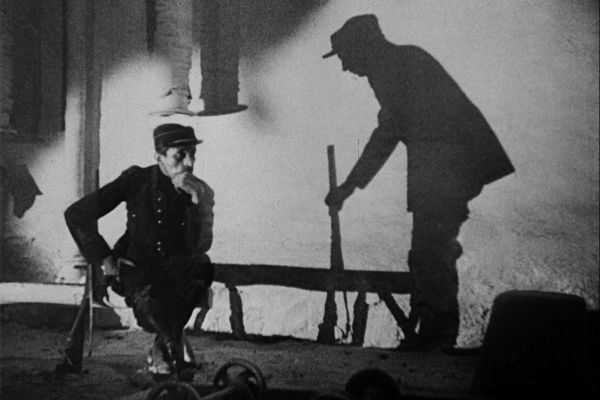90 years after its release, Carl Theodor Dreyer’s creepy, enigmatic vampire tale remains something of an outlier in the development of the subgenre. It didn’t burn a monster into the cinematic psyche like Nosferatu. It didn’t define an entire aesthetic like Bela Lugosi’s Dracula. It resisted the lure of an overarching Gothic sensibility as exemplified by Hammer that defined the bloodsucker from the ’50s onward. There’s something bracing, weird, and decidedly experimental about Dreyer’s first sound feature that defies easy catagorisation. Even the great Danish filmmaker himself never made another film like it.
The story of Vampyr itself is deceptively simple. Occultist Allan Gray (Baron Nicholas de Gunzberg, credited as Julian West) rents a room at an inn where he is visited by an old man. The man presents him with a package that contains a book on identifying and defeating ‘vampyrs’. Gray discovers that the village is being terrorised by a vampyr called Marguerite Chopin (Henriette Gérard). Gray realises that the old man’s daughter Léone (Sybille Schmitz) is under the spell of the vampyr, and what was initially assumed to be a wasting illness is in fact the girl succumbing to the Chopin’s influence. Gray must use the book to destroy the vampyr and save the girl.
It’s the presentation that makes Vampyr such an enigma. Dreyer eschews the angularity and heightened Gothic stylisation of German expressionism – still widely seen as the aesthetic mode for horror by the time of production – in favour of a curious blend of a modern setting and a hazy surrealism. The staples of the Gothic are there: the castle, the supernatural, and the portentous atmosphere. But the contemporary backdrop offers a sense of dilapidation that speaks more of the parlous economic state of the interbellum period, than the fairy tale castles and lush velvet of romantic literature. There is no shortage of startling images, but Dreyer’s almost somnambulant camera elides more than it clarifies. The dreamlike gauze erodes the sturdy realism of its jaded ’30s setting like water on quicklime.
And what images. The dancing shadows, the old man with the scythe, Gray discovering himself dead and glassy-eyed in the coffin, the possessed Léone’s unsettling rictus grin. While none are especially terrifying, especially to modern sensibilities, the effect is cumulative and it’s much later that one realises how indelible the film’s visuals have become. It’s an intensely visual movie, with Dreyer deciding to film with as little dialogue as possible. This is perhaps a hold-over from the silent era, with Dreyer wrestling with the new technology – and wrestle he did – and perhaps a decision based on his predominant use of non-actors. The most notable is Baron de Gunzberg, who financed the project on the proviso that he play the lead. He’s certainly not bad; his dandy-ish air and a hint of Habsburg jaw give him look of aristocratic aloofness that functions well for a protagonist who is curiously passive. As a cipher for a similarly bewildered audience, it’s excellent casting.
Vampyr is an experience that demands repeated viewings. Its mysteries are to be teased at like the threads of a tangled ball of wool. The luxury is, at 75 minutes, it is a film that makes no great demands, at least in terms of time. There are aspects of its storytelling that seem strange now, such as most of the exposition coming from lengthy passages in the book Gray receives from the old man. It seems an incongruously epistolary device for a film that is otherwise fueled by it’s oneiric visuals. For those used to silent films, it’s less jarring, with the pages of the book functioning as intertitles. But everything that seems inconsistent or unexplained contributes to the almost unique experience. There’s been little since that taps into such an unsettling liminal space between reality and dream state. Herk Harvey‘s Carnival of Souls is perhaps as close as anyone ever has to replicating Dreyer’s achievement. Beautiful, strange, and beguiling, it’s one of those rare works of art where its imperfections prove to be strengths.
Screening at cinemas nationwide and on Blu-ray now
